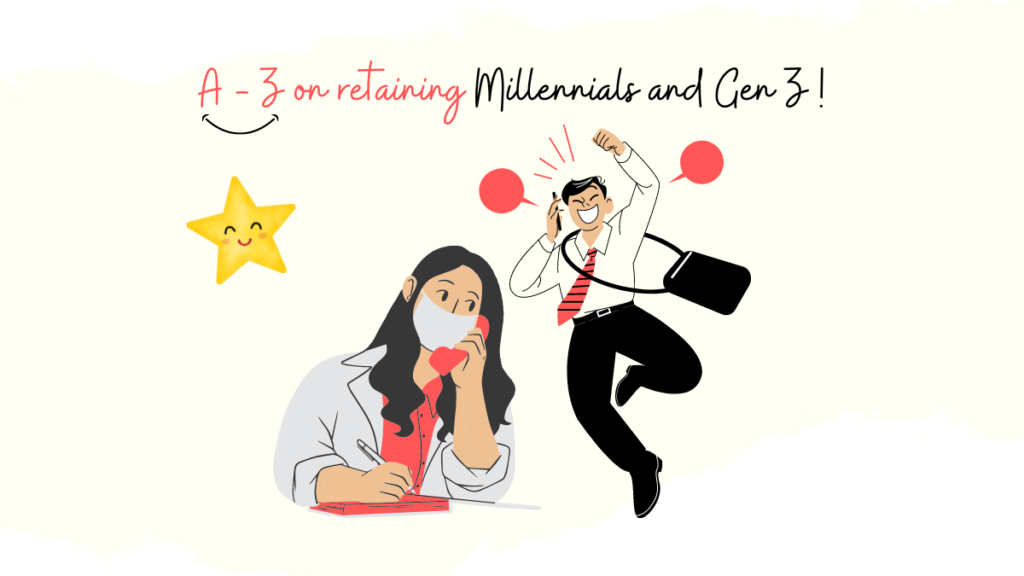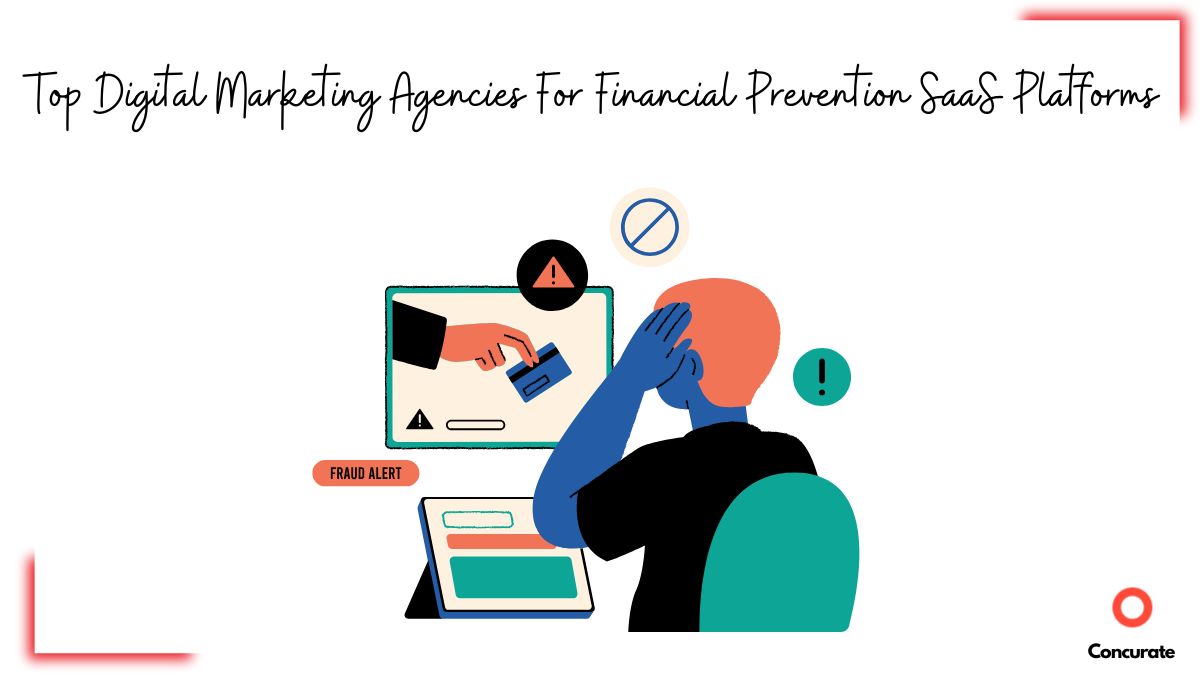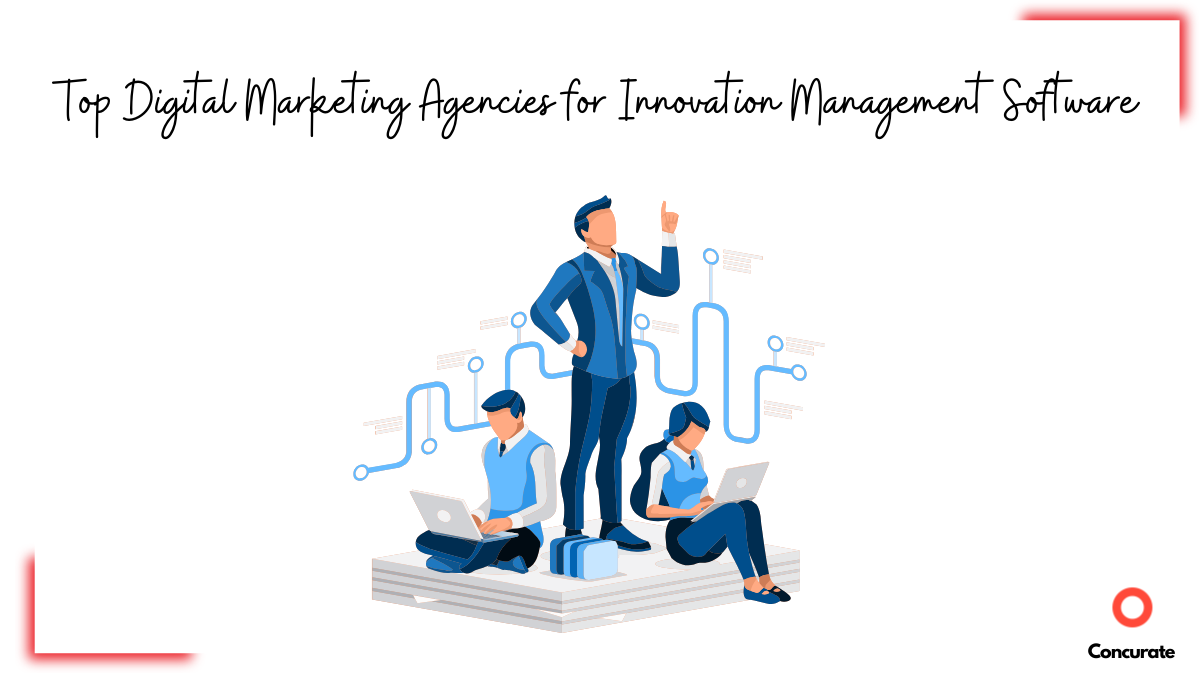A Simple, Actionable, Effective Guide
What makes me stick to my company – Concurate?
Well – many things – great growth opportunities, awesome mentorship, global exposure, very high-profile clients, no micromanagement, honest feedback, recognition, etc.
What else can I ask for?
Honestly – Nothing!
However, everyone may not be as lucky as I am! In the second half of 2021, 20 million-plus Americans quit their jobs. That’s almost the entire population of Australia. The majority of the workforce today is Gen-Z and Millennials. The younger generation’s expectations and requirements of a job and workplace are very different from the traditional ideas of job security and a good salary. So, in a world where opportunities are easy to find and create, how do you hold on to the talent you worked so hard to identify?
The answer is quite simple. Ensure the talent you choose is choosing you, every day. Based on research and experience, here’s an alphabetical list of things put together just for you, as a guide to talent retention:
The Actionable A-Z Dictionary of Millennial Employee Retention
Autonomy
Avoid micromanaging. Start trusting.
Autonomy means self-governance and letting a person be able to make their own decisions with respect to how they do their work. Over the years autonomy has become a determinant of job satisfaction.
Let’s say you’ve given an employee a task to do that you had once done as a young employee in your time. They employ a different method to get that task done. That urge in you to tell them not to do it that way – don’t let that urge get the better of you. Avoid telling them how to do what they have to do. They’ve been hired to do work that both you and they believe they are good at doing. Trust in your hiring and in their skill and strengths.
Push employees out of their comfort zones every once in a while and then give them the power to make their choices (and that includes running the risk of failure). Employees recognize and appreciate being given the freedom of choice and tend to stick around longer. They also deliver fantastic results, and become unafraid of trying new things and being in alien situations.
Belief System
A common belief system across all stakeholders (clients, the company, and its employees) in an organization is one of the keys to success. And who doesn’t want to be part of a successful system?
Every organization has a belief system that it’s built on – a foundation of sorts. Every brick (employee) that’s used to build on that foundation needs to have something in sync with that belief system. An employee who does is the right fit for the job. Whereas someone whose belief system is in conflict will never fit well enough into the organization. Almost like a piece of a jigsaw puzzle that belongs to another set. Say, for instance, a cribber v. a problem solver. A cribber is someone who constantly complains about problems around them instead of looking for solutions to them. A problem-solver on the other hand is someone who obsessively looks for solutions, even if they are outside of their comfort zone. Which kind of person do you think is a better fit for the company?
And constant friction that makes an employee feel like he doesn’t want to go to his workspace on a daily basis is sometimes enough reason for an employee to switch their workplace.
Culture
Toxic company culture is a bigger reason than burnout or salaries that cause talent loss. Some factors that make a culture toxic are disrespectful, unethical, non-inclusive, cut-throat, and abusive behavior. As a leader, toxicity must be taken as seriously as performance. Actively work towards building a strong culture that turns tension into harmony. Focus on healthy habit-building as a part of business and workplace ethos.
High-performance organizations have two things in abundance: productivity and positivity. Productivity involves getting the right stuff done, thereby creating value for customers and shareholders, and positivity generates great outcomes for employees in terms of their satisfaction, belonging, and growth. Most companies miss the second point, but great companies focus on both.
Delegation
Steve Jobs
In a work atmosphere, the biggest show of confidence is in delegating. The more responsibility (read bigger opportunities) employees are given, the more valued they feel. And the more work a leader delegates, the more time there is to get more done for the company as a whole. So delegation sets up the perfect win-win situation.
Engagement
Talent which chooses to stay is employees engaged constructively. An employee who has new things to learn, challenging tasks lined up on a daily basis, and opportunities for growth and learning is much more likely to stay with an organization compared to an employee who does the same thing day in and day out.
Flexibility
The WFH remote work culture has increased the demand for flexible work hours from the talented workforce. The days of clocking hours and punching in and out, timing breaks, and monitoring every movement of employees are long gone. Flexible work hours and a goal-driven system are the need of the hour (quite literally :)). It’s not surprising that 82% of people who took part in a survey said they would be more loyal to their employers if they had flexible work options.
Growth
Give a man a fish, and you feed him for a day. Teach a man to fish, and you feed him for a lifetime. As a leader, you can choose to be the kind who gives your employee a fish – an answer to a question, a roadmap or blueprint to success, or a path that he can walk. Or, you can choose to be the kind who teaches him to fish – force him to think outside the box, encourage creative thinking, or push him outside his comfort zone. Choose to be the latter. It will help employees create a growth trajectory for themselves. And you can stand by them to nurture them through.
Encourage your younger employees to indulge in courses and classes that can help them upskill. Offering a platform for growth is a great way to ensure job satisfaction. Set aside an allowance or offer assistance – financial and otherwise for your employees to enroll in programs that will help them perform better at work.
Actively encourage their professional development and growth – Don’t make talent wait for an opportunity. Put skill and delivery over seniority if you have to. It takes a good leader to recognize talent and push growth when it’s due.
Hire
Retention begins with recruiting. Hiring an employee is actually rocket science – it requires a certain amount of understanding of human psychology, awareness of the brand, business, and culture, and the ability to gauge correctly how much potential candidates match these aspects. People who are open to feedback, prefer to solve problems rather than cry over them, are always curious to learn new things, etc. make a great fit.
Internal mobility
Many a time employees who have joined an organization in a particular role may outgrow that role in their time at the organization. Sometimes, it’s boredom; sometimes, lack of interest or the birth of new interests. When talent is as good as it is, structure internal mobility policies that allow talent to switch roles, teams, and profiles. Recognizing talent and providing a fertile ground for growth serves to reduce the temptation for talent to seek opportunities outside.
Job satisfaction
Job satisfaction and work environment are complementary factors that influence an employee’s decision to stay or leave an organization. While both have an equal impact on an employee’s decision, job satisfaction weighs slightly heavier. When an employee is satisfied with the job, it makes him want to stay as opposed to environmental factors that have an external impact on his decision.
So how do you ensure job satisfaction? It starts with hiring the right person for the right job, constantly checking in with employees, providing growth opportunities, rewards, and recognition, but most importantly constantly evaluating if the growth of the employee matches his role in the organization. And if it doesn’t, then in finding the right fit for him.
Knowledge sharing
Keep your company’s knowledge widely accessible and updated. Encourage employees to write about their learnings from products and projects. And share this in your organization. We encourage everyone in our organization to write about the methods used to find answers to complex questions. We’ve noticed sharing knowledge leads to better results, overall. When one person learns and shares, everyone learns and grows. Learning provides growth, growth retains talent.
Lead (Don’t Boss)
Be a leader, not a boss. Most people join an organization with the belief that they will grow where they are choosing to plant themselves, in a healthy work environment. Example over instruction, one-to-one honest feedback over ridicule, genuine appreciation in public, and unselfishness to shine the spotlight on your team are some best practices to implement.
Besides, setting up a mentorship program in your company is an excellent idea to boost employee confidence, commitment, and performance. And keeping that in mind, coach managers to imbibe a similar system and culture at the team level. Leadership style permeates from the top down and it is you who must set the tone by action. Make this leadership style a system that every person in a leadership role follows at the organization. Educate managers on how to conduct meaningful conversations, asking how their people are doing with their professional or personal goals. Coach managers to bring out the best from their teams.
Meritocracy
Many organizations let experience dictate growth and advancement. This puts exceptionally talented employees at a disadvantage. Recognizing the potential and providing employees growth opportunities, promotions and advancements on the basis of merit rather than seniority is a way to show the talent that they are valued for what they bring to the table and not simply for the number of years of work they have put in. When talent feels wanted and their merit is rewarded, they are far more likely to stay.
Pro tip: If you need 30 standout SaaS growth hacks to attain double the growth for your SaaS business, fill out the form below!
Newsletter
An internal newsletter (read simple company-wide email) is a superb way to let everyone in the organization get to know what’s happening in parts of the organization that they may not be aware of. Focus on the impact that your information sharing creates. Maybe you can share interesting insights about success stories within the organization, client feedback, new experiments, and systems, etc. Familiarity and a sense of belonging help create stronger ties and deeper roots. Keep this easy and low frill so it’s easy for you to maintain regularity and consistency.
Office Hours
At our organization, we have a concept called Office Hours. Nope, it’s not what you’re thinking – no 9-5 workdays chalked out with meticulously planned schedules. This is a time when anyone in the organization is allowed to book the founder’s calendar to have a one-on-one chat. While this mainly happens when employees ask questions and need advice, it almost always results in great conversation and learning. Encouraging asking questions builds confidence and gives leaders insights into their employees’ thoughts which helps them see better, too. By understanding how employees are feeling you get an idea about their motivation, goals, and challenges. This further helps you to come up with some retention strategies.
Purpose
Paul Polman, CEO, Unilever (2009-19) in his time there adopted the idea of making “Sustainable living commonplace” and has shown how purpose can help reduce tensions in the workforce and create optimum conditions for growth. In 2020, 92% of Unilever employees who attended a “Discover Your Purpose” workshop reported having jobs that inspire them to go the extra mile.
Study shows 89% of young employees have opined that they are willing to give ground on compensation and title at work if the business is aligned with their values or mission. A sense of purpose serves as a guide to tough decisions (even quitting a job). So, identify a sense of purpose and use it as a driving force.
Quality of work
When you hire talent, you do so because you see the potential. One way to reward that potential is to ensure that talent is kept occupied with challenging and interesting work.
Beware of monotony it’s the mother of all the deadly sins.
Edith Wharton
Offering monotonous work to someone who is capable of growing himself and the company with out-of-the-box ideas is a total waste of potential. It’s like leaving the sword to rust.
Recognition
Feeling special and recognized for talent is more important than monetary compensation. Recognition can take on many forms – simply acknowledging the talent that they bring to the table, applauding their contributions and work, or recognizing what they are capable of and encouraging further growth. Listen to ideas, and set up internal reward programs that give out rewards that are not “things”. Think experiences – holidays for employees and their special ones, paid time off, occasion-centric, thoughtful experiences like a newborn baby photoshoot.
Systems
When the quality of work depends on individual employees, it’s bound to suffer in their absence, unless (s)he creates a system that’s capable of running seamlessly even in their absence.
When asked to create a system, an employee may feel like the system may become his nemesis and make him dispensable. However, that’s really not how it works. Once an employee masters the system at the level he’s currently at, the only way for him to go is upward and onward, within the organizational hierarchy. And here, he has the chance to create a great new system.
The more systems (s)he creates, the more the company benefits, and grows. It’s a win-win situation that ensures the growth of both the organization as well as the employee. And in contributing this way to the organization, (s)he becomes a valuable asset to the company, an employee the company loves. And no company would want to let go of an employee that contributes to growth.
Trust
A team is not a group of people that work together. A team is a group of people that trust each other.
Simon Sinek
The foundation of every successful relationship is to establish trust. Reminding employees that you believe in them is one way of showing trust. Allowing them to fail and helping them handle it gracefully is another. Creating an environment that echoes the culture of – I’ve got your back – is a definite determinant in talent choosing to stay.
Unexpected tokens of care
Appraisals and monetary incentives are things employees come to expect. How can you stand out from amongst the thousands of other employers that are options for great talent to move to? By showing that you care when employees least expect it.
Values
Gen-Z specifically is on the hunt for jobs that allow them to be their most authentic self. Finding roles that feel most authentic to their personal values is most important to them. They believe that their true self is their greatest asset. And why not? Allowing the talent you hire to stay true to their honest, best selves is what is most likely to get them to perform to their potential. But more importantly, what will make them stay – for acceptance and respect for who they provide a level of comfort that’s irreplaceable.
Duolingo’s TikTok account went super viral. Thanks to the company allowing a driven, passionate young woman to walk in and create magic by allowing her to fit into a role that aligns with her personal values.
Work environment
No matter how good the work an employee is given or does, a toxic, unfriendly, unsafe environment can drive an employee out. Besides the various aspects of workplace discussed earlier in the article, ensuring talent stays requires the provision of a work environment that:
- Encourages team spirit
- Ensures safety and inclusion
- Focuses on proper technological infrastructure
- Offers clean and organized workspace
- Allows for some fun to unwind
eXit interviews and surveys
100% retention is unrealistic. Despite all the efforts, an organization may put in to ensure talent retention, there will still be factors beyond control due to which talent may leave. When this happens, ensure that exit interviews and surveys are conducted with them. This can help you understand what factors drive employees to leave, if there are any unique to your organization and if there are any aspects that need to be worked on within the organization. Share the results of these surveys and the outtakes of the interviews with the leadership team and work towards developing better retention strategies.
Yardstick
Performance reviews are an essential yardstick for success and satisfaction measurement – both. Encourage employees to question the feedback they receive, hear them out, and help them improve. Facilitate 360-degree feedback where employees give feedback to their managers as well. Choose to hire people with the right attitude who are receptive to feedback and criticism.
Zeal
Interact with employees constantly and keep a finger on their pulse. When you find that the enthusiasm and zeal for their work are waning, use it as an opportunity to give them a pick-me-up. Organize a one-on-one meeting with the employee and someone from the C-Suite, to understand what has caused a lack of interest and why performance has been adversely affected. Keeping the enthusiasm for work alive in an employee is what is going to cause him to wake up each morning and look forward to work. And you can do a lot to make that happen.
In Sum and Total
Every talented person spends their life striving to be unique. And at work, endeavor to create outcomes that wouldn’t be possible if they disappeared. If talent retention is a goal, it’s important to remember this. No one interviews for a job and joins an organization only to quit. The default setting is for an employee to stay. So really, providing an environment that nurtures them is just about all it takes.
Glad that Google or social media directed you to read this post. Just as you came to us – we can bring your target audience to your website. Open for a quick call to explore content marketing for your business? Block our calender here.
If you wish to read more goodness, subscribe to our newsletter.
We send value to your inbox only once in 15 days.







